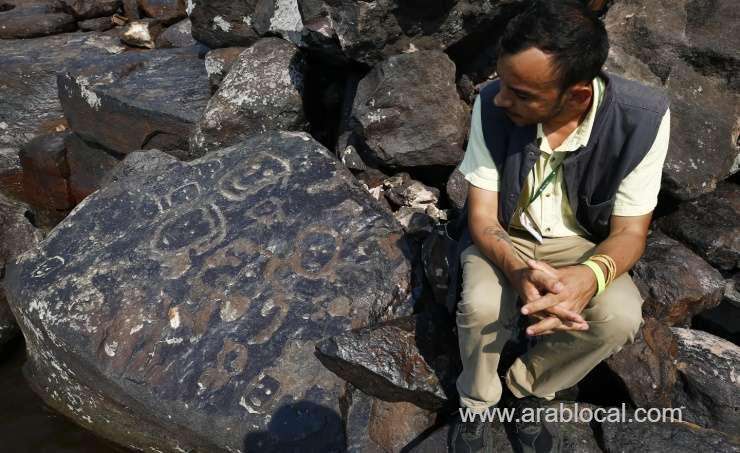
Due to historic low water levels, the Negro River, which runs through the Brazilian Amazon, has revealed millennia-old carvings that had been submerged for centuries.
Archaeologists believe the engravings at the riverbanks are 1,000 to 2,000 years old, and depict human faces, animals, and other figures.
A Brazilian archaeologist from the National Historical and Artistic Heritage Institute says they allow us to understand the way of life of prehistoric populations.
According to the Associated Press (AP), scientists think other rocks at the site were used to sharpen arrows and stone tools.
Manaus, the capital and largest city of Amazonas state, hosts the archaeological site of Ponto das Lajes. Locals and tourists can observe the "Meeting of Waters" when the dark, Coca-Cola-colored Negro River and the pale, clay-colored Solimoes River converge without merging and run parallel to one another.
Prior to the current drought, the petroglyphs had last been seen in 2010, when another bad drought struck the region.
Once navigable rivers in Amazonas have become sand banks and mud, isolating hundreds of communities. In recent weeks, public authorities have struggled to provide food and water to those communities.
The Associated Press observed the delivery of basic goods earlier this week. It was impossible for boats to dock close to residents, most of whom were small farmers and fishermen.
There is heavy smoke and high temperatures in Manaus and other nearby cities because of fires set for clearing pastures and deforestation. Tefe Lake, near the Amazon River, has also seen dozens of river dolphins die because of the drought.
Dry spells are part of the Amazon's cyclical weather pattern, occurring usually between May and October. The drought this season has been fiercer than usual due to two climate phenomena: the warming of northern tropical Atlantic Ocean waters and El Nio, which has caused surface waters in the Equatorial Pacific to warm.